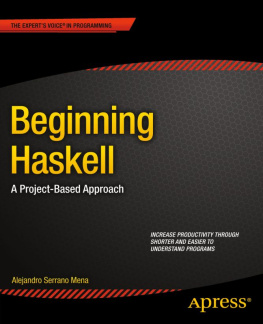Programming in Haskell
Second Edition
Haskell is a purely functional language that allows programmers to rapidly develop clear, concise and correct software. The language has grown in popularity in recent years, both in teaching and in industry. This book is based on the authors experience of teaching Haskell for more than 20 years. All concepts are explained from first principles and no programming experience is required, making this book accessible to a broad spectrum of readers. While introduces the reader to more advanced topics.
This new edition has been extensively updated and expanded to include recent and more advanced features of Haskell, new examples and exercises, selected solutions, and freely downloadable lecture slides and code. The presentation is clean and simple, while also being fully compliant with the latest version of the language, including recent changes concerning applicative, monadic, foldable and traversable types.
GRAHAM HUTTON is Professor of Computer Science at the University of Nottingham. He has taught Haskell to thousands of students and received numerous best lecturer awards. Hutton has served as an editor of the Journal of Functional Programming, chair of the Haskell Symposium and the International Conference on Functional Programming, vice-chair of the ACM Special Interest Group on Programming Languages, and he is an ACM Distinguished Scientist.
Programming in Haskell
Second Edition
GRAHAM HUTTON
University of Nottingham


University Printing House, Cambridge CB2 8BS, United Kingdom
One Liberty Plaza, 20th Floor, New York, NY 10006, USA
477 Williamstown Road, Port Melbourne, VIC 3207, Australia
4843/24, 2nd Floor, Ansari Road, Daryaganj, Delhi - 110002, India
79 Anson Road, #06-04/06, Singapore 079906
Cambridge University Press is part of the University of Cambridge.
It furthers the Universitys mission by disseminating knowledge in the pursuit of education, learning, and research at the highest international levels of excellence.
www.cambridge.org
Information on this title: www.cambridge.org/9781316626221
10.1017/9781316784099
Graham Hutton 2007, 2016
This publication is in copyright. Subject to statutory exception and to the provisions of relevant collective licensing agreements, no reproduction of any part may take place without the written permission of Cambridge University Press.
First published 2007
Second edition 2016
Printed in the United Kingdom by Clays, St Ives plc in 2016
A catalogue record for this publication is available from the British Library
ISBN 978-1-316-62622-1 Paperback
Cambridge University Press has no responsibility for the persistence or accuracy of URLs for external or third-party Internet Web sites referred to in this publication, and does not guarantee that any content on such Web sites is, or will remain, accurate or appropriate.
For Annette, Callum and Tom
Contents
Foreword
It is nearly a century ago that Alonzo Church introduced the lambda calculus, and over half a century ago that John McCarthy introduced Lisp, the worlds second oldest programming language and the first functional language based on the lambda calculus. By now, every major programming language including JavaScript, C++, Swift, Python, PHP, Visual Basic, Java, ... has support for lambda expressions or anonymous higher-order functions.
As with any idea that becomes mainstream, inevitably the underlying foundations and principles get watered down or forgotten. Lisp allowed mutation, yet today many confuse functions as first-class citizens with immutability. At the same time, other effects such as exceptions, reflection, communication with the outside world, and concurrency go unmentioned. Adding recursion in the form of feedback-loops to pure combinational circuits lets us implement mutable state via flip-flops. Similarly, using one effect such as concurrency or input/output we can simulate other effects such as mutability. John Hughes famously stated in his classic paper Why Functional Programming Matters that we cannot make a language more powerful by eliminating features. To that, we add that often we cannot even make a language less powerful by removing features. In this book, Graham demonstrates convincingly that the true value of functional programming lies in leveraging first-class functions to achieve compositionality and equational reasoning. Or in Grahams own words, functional programming can be viewed as a style of programming in which the basic method of computation is the application of functions to arguments. These functions do not necessarily have to be pure or statically typed in order to realise the simplicity, elegance, and conciseness of expression that we get from the functional style.
While you can code like a functional hacker in a plethora of languages, a semantically pure and lazy, and syntactically lean and terse language such as Haskell is still the best way to learn how to think like a fundamentalist. Based upon decades of teaching experience, and backed by an impressive stream of research papers, in this book Graham gently guides us through the whole gambit of key functional programming concepts such as higher-order functions, recursion, list comprehensions, algebraic datatypes and pattern matching. The book does not shy away from more advanced concepts. If you are still confused by the n-th blog post that attempts to explain monads, you are in the right place. Gently starting with the IO monad, Graham progresses from functors to applicatives using many concrete examples. By the time he arrives at monads, every reader will feel that they themselves could have come up with the concept of a monad as a generic pattern for composing functions with effects. The chapter on monadic parsers brings everything together in a compelling use-case of parsing arithmetic expressions in the implementation of a simple calculator.
This new edition not only adds many more concrete examples of concepts introduced throughout the book, it also introduces the novel Haskell concepts of foldable and traversable types. Readers familiar with object-oriented languages routinely use iterables and visitors to enumerate over all values in a container, or respectively to traverse complex data structures. Haskells higher-kinded type classes allow for a very concise and abstract treatment of these concepts by means of the Foldable and Traversable classes. Last but not least, the final chapters of the book give an in-depth overview of lazy evaluation and equational reasoning to prove and derive programs. The capstone chapter on calculating compilers especially appeals to me because it touches a topic that has had my keen interest for many decades, ever since my own PhD thesis on the same topic.
While there are plenty of alternative textbooks on Haskell in particular and functional programming in general, Grahams book is unique amongst all of these in that it uses Haskell simply as a tool for thought, and never attempts to sell Haskell or functional programming as a silver bullet that magically solves all programming problems. It focuses on elegant and concise expression of intent and thus makes a strong case of how pure and lazy functional programming is an intelligible medium for efficiently reasoning about algorithms at a high level of abstraction. The skills you acquire by studying this book will make you a much better programmer no matter what language you use to actually program in. In the past decade, using the first edition of this book I have taught many tens of thousands of students how to juggle with code. With this new edition, I am looking forward to extending this streak for at least another 10 years.

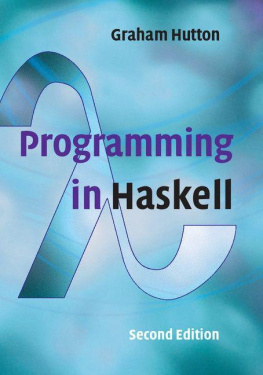

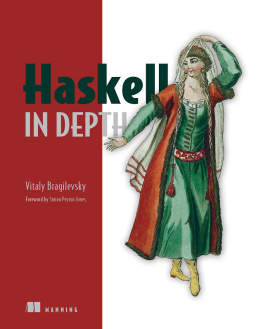

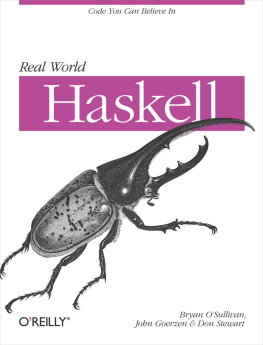
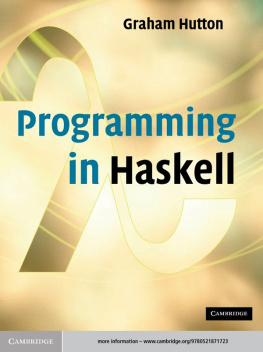
![Will Kurt [Will Kurt] - Get Programming with Haskell](/uploads/posts/book/116897/thumbs/will-kurt-will-kurt-get-programming-with-haskell.jpg)
